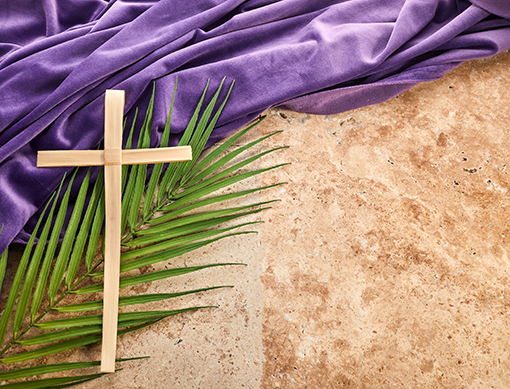“Nothin’” It seems to be the favorite response of every child when asked, “What did you do in school today?”
 Ask them about how they spent their week, and you may have to sit down and wait a bit for a response. That’s a lot of time territory to cover.
Ask them about how they spent their week, and you may have to sit down and wait a bit for a response. That’s a lot of time territory to cover.
Young children have a tendency to live in the moment, but as they mature they begin to grasp the idea of the past and the future.
The advent of Holy Week is a good opportunity to help children explore the momentous changes that can happen in a week’s time, by examining the last week in the life of Jesus.
This, of course, is a lesson that must be adapted for children of different ages; the last days of Jesus can be difficult for young children to grasp.
So, what exactly happened during the last week in the life of Jesus?
Palm Sunday is the day Jesus rides a donkey into Jerusalem surrounded by people waving palms, laying them on the ground in front of him, and shouting “Hosanna to the Son of David!” By the time of his arrest on Holy Thursday many of these same people will have turned against him.
Holy Monday is the day Jesus and his disciples visited the Temple where Jesus overturned the tables of those who were buying and selling things, and the money changers’ tables as well, saying “My house shall be called a house of prayer’; but you make it a den of robbers.” And the sick and lame came to him in the Temple to be healed. Read St. Matthew 21:12-17
Holy Tuesday saw Jesus continuing to preach, in the Temple to religious leaders who confronted him, and to his disciples who he was trying to ready for what would happen in the next few days, and to help them understand who he was. Read St. John 12:20-38
Holy Wednesday is the time Judas betrayed Jesus for thirty pieces of silver, when “he went away and conferred with the chief priests and captains how he might betray him to them. And they were glad and engaged to give him money. So he agreed, and sought an opportunity to betray him to them in the absence of the multitude.” Read Luke 22:1-6
Holy Thursday was the time of the Last Supper, when Jesus ate with his apostles before the Passover Feast. This meal marked the institution of the Eucharist and the first Mass. On this night, Jesus also washed the feet of his apostles. He then asked Peter, James and John to pray with him in the Garden of Gethsemane, where the three fell asleep. It was here, in the Garden, that Jesus was arrested. Read Mark 14:12-25
Good Friday is the day Jesus is crucified and dies on the Cross. If students have prayed the Stations of the Cross, also called the Way of the Cross, remind them that Good Friday is the day that all those events happened. If they haven’t prayed the Way of the Cross, consider hanging student renderings of each station around the classroom and pray several each day before Good Friday. Read Mark 15:1-47
Holy Saturday finds Jesus in the tomb. You may point out to students that if they go to church on Holy Saturday, they will see the main tabernacle of the church is empty. Jesus is not there. The tabernacle door is left open, and the altar has no covering or decoration. Ask them why.
Holy Week is a time of unparalleled expression of the sacred. It is full of symbols and movement toward the most important celebration of the Church – Easter and the Resurrection of Christ. While students may not be in school for several days of Holy Week, a teacher’s own wonder and awe at what will be transpiring can be contagious, and prepare students to worship well when they have the opportunity.
 About the Author
About the AuthorMary Clifford Morrell, mother of six and grandmother to ten, is a Catholic journalist, editor, and author who has served the Dioceses of Metuchen and Trenton, New Jersey; Burlington, Vermont, and RENEW International in the areas of religious education and communication.
